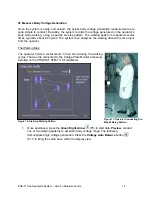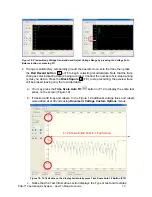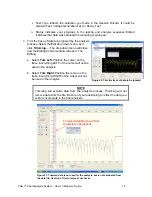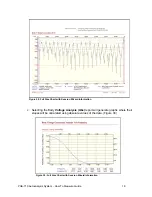
PGA-710 Autoanalysis System – How To Measure Guide
26
Ions are attracted or repelled by materials and grounded conductors within their
environment. Thus, a positively (+) charge material’s electrostatic field will reach out and
attract negative (-) ions to offset the material’s charge as in Figure 45.
Consequently, one will want to Measure and confirm that:
1. The number of positive and negative ions generated by the ionizing process is close to
equal, or balanced. If the numbers of positive and negative ions are unbalanced, they will
create an “off set voltage” on an exposed surface.
2. The ions generated are sufficient to neutralize an unwanted charge on the critical surface
or device in a reasonable time period. In other words, dissipate a charge in an
acceptable “decay time”.
Thus, two measurements of an ionizer device or system are required: Offset Voltage in
electrostatic volts; and, Decay Time in seconds.
VII.Offset Voltage & Decay Time Measurement Procedures
The following describes decay and offset voltage measurements of bench top ionizers.
Room systems and compressed air or gas devices may be measured in a similar manner
but may require use of a six inch square plate (15.24 x 15.24 cm) depending on company
ESD Program requirements.
Measuring Offset Voltage
Offset voltage indicates the degree of ion imbalance produced by the ionizer at a distance
from its outlet, or at the “work point” where the ionization effect is desired. To measure
offset voltage, use the following procedure:
+
+
+
+
+
+
+
+
+
+
+
+
+
+
+
+
+
+
+
+
+
+
+
+
+
+
+
+
+
Charged Material (+ or -)
Ionizers Supply Charged
Gas Molecule to the Air
Attracts Opposite
Polarity Air Ions
Figure 45 A Positively Charged Material Attractes Negative
Figure 45: Positively Charged Material Attracts Negative Ions










































